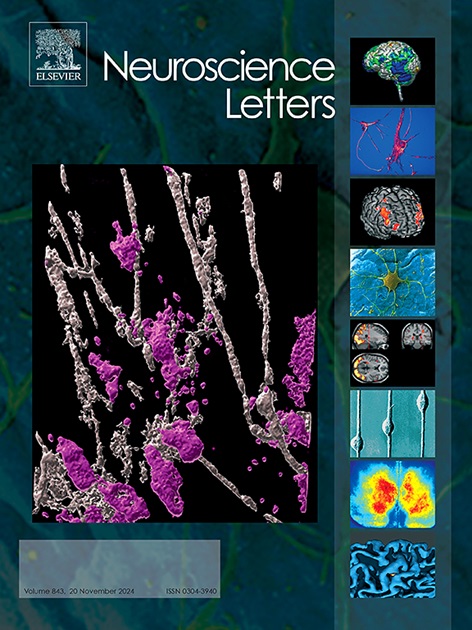丙戊酸可预防nmda诱导的狨猴视网膜变性。
IF 2
4区 医学
Q3 NEUROSCIENCES
引用次数: 0
摘要
丙戊酸(VPA)是一种处方药,广泛用于治疗癫痫、情绪障碍、偏头痛和神经性疼痛。越来越多的证据表明VPA具有神经保护作用。青光眼是世界上导致视力丧失的主要原因之一,其特征是视网膜神经节细胞(RGCs)及其轴突进行性变性。在啮齿类动物玻璃体内注射n -甲基- d -天冬氨酸(NMDA)作为RGC急性死亡模型进行了很好的研究。在本研究中,我们首先研究了NMDA是否会导致非人类灵长类普通狨猴的视网膜变性,因为它们的眼睛结构和功能与人类相似。我们通过光学相干断层扫描和多焦视网膜电图这两种非侵入性方法发现NMDA对眼压没有影响,但会引起视网膜变性。此外,VPA治疗抑制了狨猴的急性视网膜变性并改善了视力障碍。我们的发现提出了有趣的可能性,即VPA可能有助于预防RGC死亡,并表明狨猴是研究青光眼的有用动物模型。本文章由计算机程序翻译,如有差异,请以英文原文为准。
Valproic acid prevents NMDA-induced retinal degeneration in marmosets
Valproic acid (VPA) is a prescribed drug widely used for treatment of epilepsy, mood disorders, migraines and neuropathic pain. Accumulating evidence suggests that VPA possess neuroprotective properties. Glaucoma, one of the leading causes of vision loss in the world, is characterized by progressive degeneration of retinal ganglion cells (RGCs) and their axons. Intravitreal injection of N-methyl-D-aspartate (NMDA) is well studied in rodents as an acute model of RGC death. In the present study, we first investigated whether NMDA induced retinal degeneration in non-human primate common marmosets as the structure and function of the eye is similar to that of humans. We found that NMDA had no effects on intraocular pressure but induced retinal degeneration by using optical coherence tomography and multifocal electroretinogram, both of which are non-invasive methods. In addition, VPA treatment suppressed acute retinal degeneration and ameliorated visual impairment in marmosets. Our findings raise intriguing possibilities that VPA may be useful for preventing RGC death and suggest that the marmoset is a useful animal model for studying glaucoma.
求助全文
通过发布文献求助,成功后即可免费获取论文全文。
去求助
来源期刊

Neuroscience Letters
医学-神经科学
CiteScore
5.20
自引率
0.00%
发文量
408
审稿时长
50 days
期刊介绍:
Neuroscience Letters is devoted to the rapid publication of short, high-quality papers of interest to the broad community of neuroscientists. Only papers which will make a significant addition to the literature in the field will be published. Papers in all areas of neuroscience - molecular, cellular, developmental, systems, behavioral and cognitive, as well as computational - will be considered for publication. Submission of laboratory investigations that shed light on disease mechanisms is encouraged. Special Issues, edited by Guest Editors to cover new and rapidly-moving areas, will include invited mini-reviews. Occasional mini-reviews in especially timely areas will be considered for publication, without invitation, outside of Special Issues; these un-solicited mini-reviews can be submitted without invitation but must be of very high quality. Clinical studies will also be published if they provide new information about organization or actions of the nervous system, or provide new insights into the neurobiology of disease. NSL does not publish case reports.
 求助内容:
求助内容: 应助结果提醒方式:
应助结果提醒方式:


